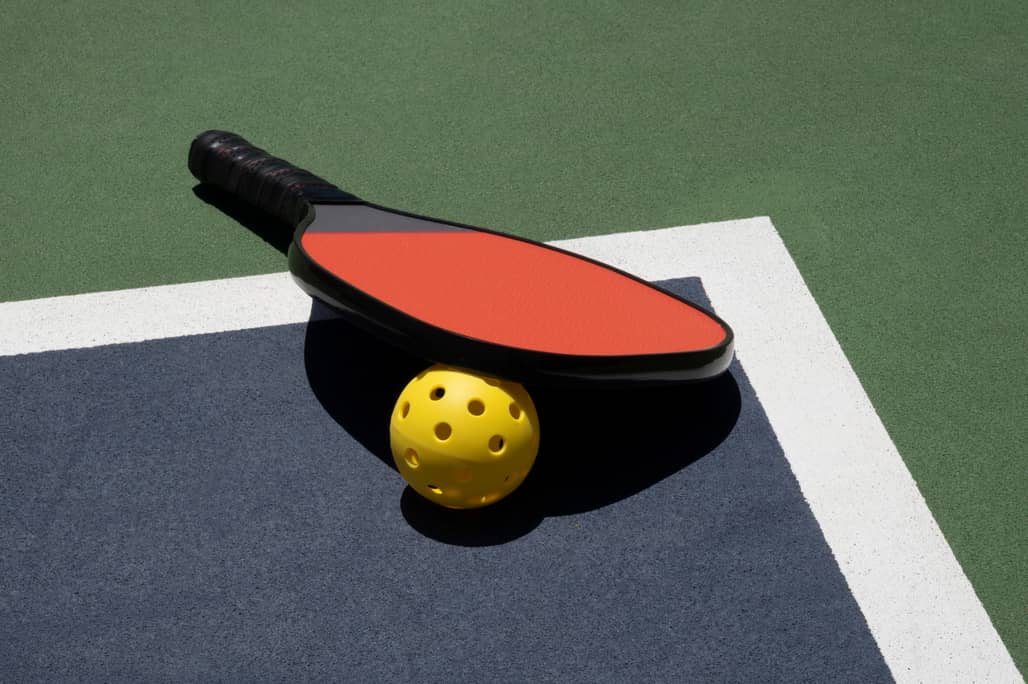In a pickle? The game that everyone can play, and all can get hurt. Why?
Pickleball originated in 1965 and is now played everywhere. The game is played singles or doubles with a Whiffle ball and paddles on a shrunken tennis court. It is fun, accessible to all ages, competitive, and injury-prone.

Pickleball is a fast-growing sport with 3.3 million pickleball players in the U.S. Seventy-five percent of regular participants are age 55 or older. The major injuries are due to the rapid acceleration and deceleration of unconditioned players on a hard-court surface. Pivoting and twisting, sudden stops, reaching for the ball—all contribute to the range of injuries.
Here is what we are seeing, from the bottom up:
At the foot level, blisters are mild—but torn ankle ligaments are more serious, and the worst injuries are ruptures of the Achilles tendons. Treatment is usually soft tissue massage, ice, and bracing for everything but the Achilles, which we believe should be percutaneously stitched back together if ruptured. The stitching does not involve an open incision, but it returns the tendon to normal length and thereby permits full-strength recovery. Ankle ligament tears are treated with anabolic injections of growth factors from PRP and other sources, with a brace and rehab program. Those that fail to heal are surgically stitched back together with a reefing technique that we developed 30 years ago and has been extremely effective.
At the shins, we see shin splints, gastrocnemius muscle tears, and stress fractures. The key for each of these is an early accurate diagnosis, followed by daily therapy with massage, ice, and stretching. Developing workout programs that condition the rest of the body—while resting the injured area—is the key to improving fitness while injured.
At the knees, we are seeing more traumatically torn meniscus cartilages—the shock absorbers for the knees—than ever before in the 60–80-year-old range. While there is a normally high incidence of degenerative tears in this demographic, these tears are much more symptomatic. Pain and swelling are common, as are catching and locking, all of which temporarily stop the victims’ Pickleball careers. Knee injections of hyaluronic acid combined with growth factors shut down the inflammation safely and improve the knee symptoms, but don’t repair the torn tissue. Surgical intervention for these driven athletes gets them back on the court within a few months.
Backs are always a problem. Pickleball’s twisting and reaching, bending and rotating, make anyone without strong abdominal and paraspinal muscles wince. When just the muscles are injured; stretching, strengthening, ice, and massage help relieve the pain. When the injury is strong enough to damage the discs between the vertebral bodies—causing nerve pain that radiates down the legs—more dramatic intervention is often necessary. A new field of biologic spine injections (other than cortisone) is opening the door to therapies that may actually help heal the damaged annulus (the rings around the discs) and the tissues in the facet joints of the spine. The data on those is still coming in, but we do know that cortisone damages tissues. So any of the new biologic interventions have a low bar to be better than the historical therapies.
The shoulder and elbow Pickleball injuries we see are similar to those in tennis, yet with less force. Tendonitis and rotator cuff inflammations from repetitive hitting produce nighttime pain and soreness with gripping. If treated early, with the therapies listed above, they often heal rapidly. When rotator cuffs are completely torn, surgical intervention augmented with tissue grafts is becoming the new standard of care.
Though broken bones in any area of the body can occur in Pickleball, the ankle and wrist are most vulnerable to the low-energy falls seen in the game’s older players. All fractures are wake-up calls to train harder, build more bone with resistance exercise, and practice on balance boards and uneven surfaces to build awareness and proprioception skills.
Pickleball is only fun if you are able to play. So treat it like any other major activity. Train for it and it will bring years of smiles.
